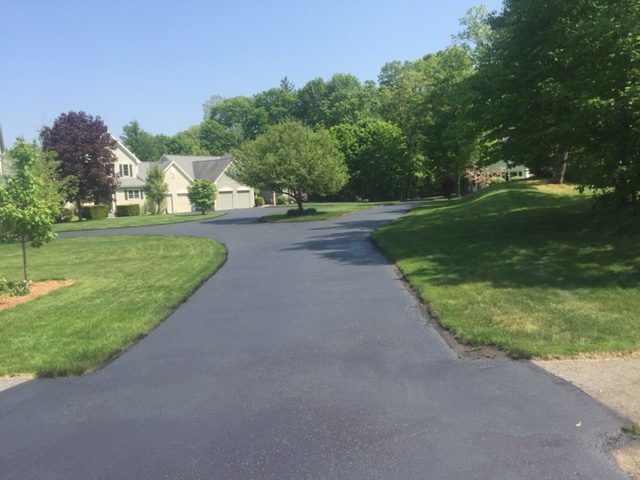Cold Mix Asphalt Vs. Hot Mix Asphalt: Which Is Right for You?

Make-up Differences
Cold mix asphalt is produced by emulsifying the asphalt binder with water and an emulsifying agent before blending it with aggregate. The hot mix asphalt manufacturing procedure entails warming the accumulation and asphalt binder separately before incorporating them at the asphalt plant.
Additionally, cool mix asphalt tends to be less thick and a lot more adaptable than warm mix asphalt. This versatility makes it far better suited for areas with higher degrees of activity, such as driveways or roadways with rush hour. In comparison, hot mix asphalt is understood for its high toughness and resistance to rutting and breaking, making it a preferred choice for freeways and high-traffic roads where long life is important.
Setup Process Variances
The procedure of installing chilly mix and warm mix asphalt shows notable variations in their treatments and requirements. In comparison, hot mix asphalt requires an extra elaborate setup process. Due to the heating demands, warm mix asphalt installments are commonly brought out by experts with customized tools, making certain a much more structurally audio and long-term outcome.
Durability and Longevity Elements
When thinking about asphalt options, durability and long life are critical aspects to assess for lasting sidewalk performance. Hot mix asphalt (HMA) is recognized for its outstanding toughness and durability.
In terms of long life, HMA normally exceeds CMA due to its exceptional stamina and resistance residential properties. HMA pavements have a longer solution life, requiring much less regular repair work and maintenance, which can equate to set you back financial savings in the future. In addition, HMA sidewalks are a lot more quickly adjustable to satisfy particular task requirements, further improving their toughness.
Expense Considerations
Taking into consideration the economic effects is a vital facet when reviewing the selection between warm mix asphalt (HMA) and cold mix asphalt (CMA) for pavement tasks. While the initial price of hot mix asphalt is normally higher than that of cold mix asphalt, HMA usually supplies an extra cost-effective option in the future as a result of its exceptional longevity and longevity. HMA is understood for its capability to stand up to hefty website traffic loads and severe climate condition, minimizing the need for frequent repair services and maintenance. On the various other hand, cold mix asphalt is more inexpensive in advance however may require more regular patching this content and resurfacing, causing greater upkeep prices over time.
In enhancement to material expenses, it's vital to take into consideration the costs associated with installation and upkeep when comparing HMA and CMA. Ultimately, the decision in between HMA and CMA need to take right into account not just the first price but also the long-lasting economic effects to identify the most affordable choice for the certain sidewalk project.
Environmental Impact Comparison
Comparison of the environmental effects in between hot mix asphalt (HMA) and chilly mix asphalt (CMA) exposes distinctive differences in sustainability practices. HMA production requires heats, bring about boosted energy consumption and greenhouse gas discharges. The process additionally releases unstable natural substances (VOCs) and dangerous air contaminants (HAPs) right into the ambience. On the other hand, CMA is created and used at reduced temperatures, reducing energy use and discharges dramatically. The lower production temperatures of CMA lead to reduced fuel intake and reduced degrees of CO2 exhausts, making it a more eco-friendly option.
Moreover, the usage of CMA commonly entails recycling existing asphalt sidewalk, promoting source conservation and lowering the quantity of waste sent to landfills. By choosing for CMA over HMA, road building projects can add favorably to ecological preservation initiatives.
Conclusion
In conclusion, the option in between chilly mix asphalt (CMA) and warm mix asphalt (HMA) relies on click here to find out more different variables sites such as composition, installment procedure, longevity, durability, price, and environmental effect. asphalt patch repair. While CMA supplies a quick and economical option for minor fixings, HMA guarantees remarkable longevity and longevity for rush hour areas. Take into consideration these variables carefully to identify which sort of asphalt is the right choice for your paving needs

Considering the economic implications is a crucial element when reviewing the choice between warm mix asphalt (HMA) and cool mix asphalt (CMA) for pavement jobs. While the preliminary expense of hot mix asphalt is usually greater than that of cold mix asphalt, HMA often gives a more economical remedy in the long run due to its exceptional sturdiness and long life. angle parking.Comparison of the ecological influences in between hot mix asphalt (HMA) and cool mix asphalt (CMA) discloses distinct differences in sustainability practices.In conclusion, the selection in between cool mix asphalt (CMA) and hot mix asphalt (HMA) depends on various factors such as make-up, installation process, sturdiness, durability, expense, and environmental impact